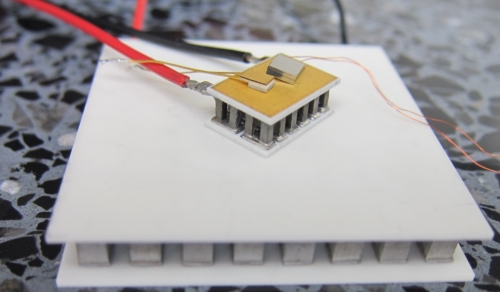Thermoelectric Sensors
Thermocouples are among the oldest electronic components and are used as temperature sensors. Two metallic conductors are joined together at one end and the other ends are connected to a voltmeter. The measured voltage (thermovoltage) corresponds directly to the temperature difference between the temperature of the contact of the two conductors (sensor junction) and the temperatures of the contacts at the voltmeter (reference junction). Characteristic functions are defined for several selected material combination to convert the measured voltage into the temperature at the sensor junction. This measurement method is very simple and independent on the length of the wires. A disadvantage of thermocouples is that the reference temperature must be either known or must be measured using a second temperature sensor. The measurement range of thermocouples is very large: from very low temperatures of -270 °C up to 2500 °C depending on the materials. The response time of thermocouples as temperature sensors is extremely fast. Due to this property thermocouples are used as safety sensors in gas appliances like gas stoves, ovens and water heaters.
Thermopiles consists of several thermocouples and are mostly used to measure the intensity of radiation. A resolution of a few µW/cm^2 can be obtained depending on the number of thermocouples interconnected in series and the design of the thermally decoupled contacts. Thermopiles are used in infrared thermometers as well as heat flow meters.
Laser Power Meters
Dew-Point Sensors are based on Peltier-Coolers


